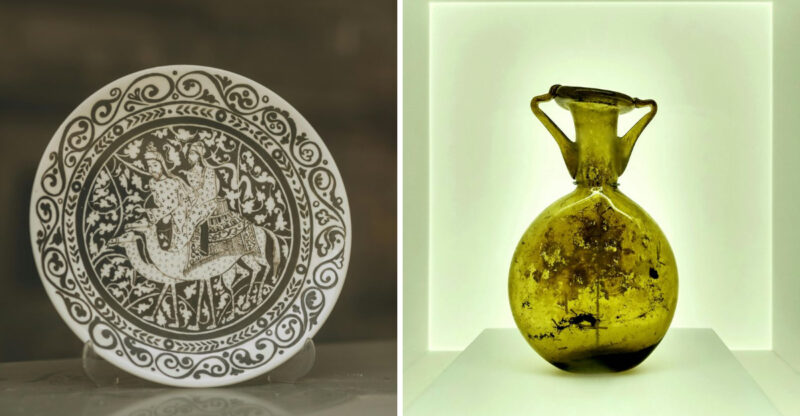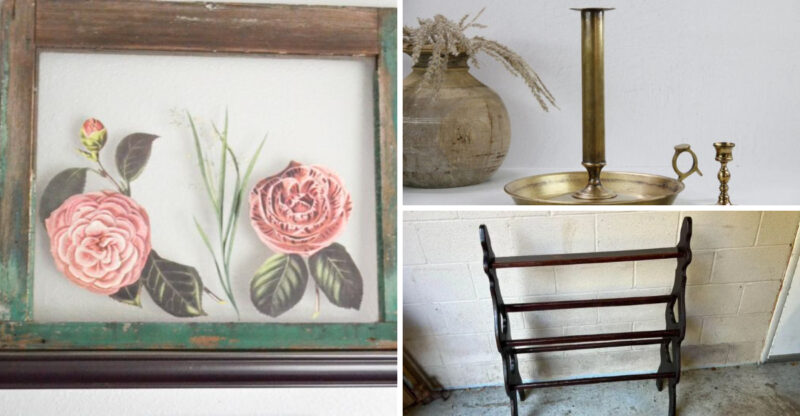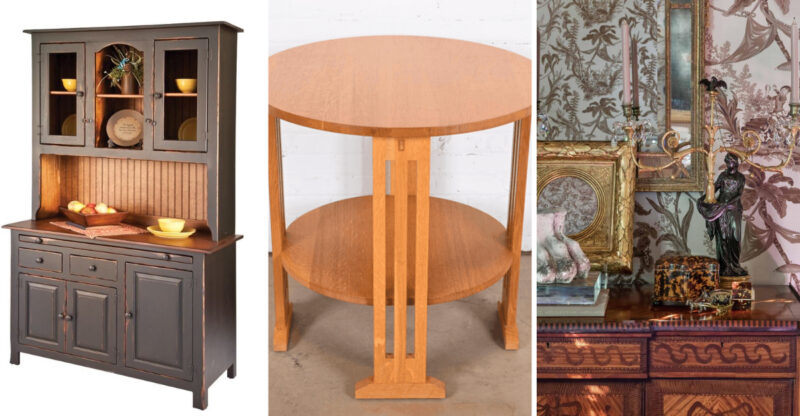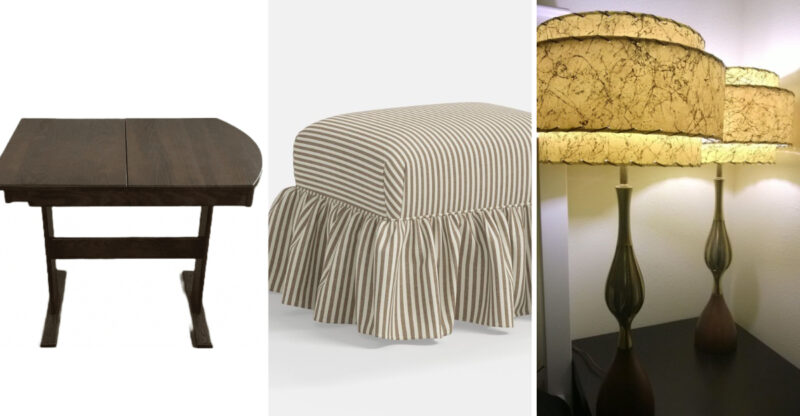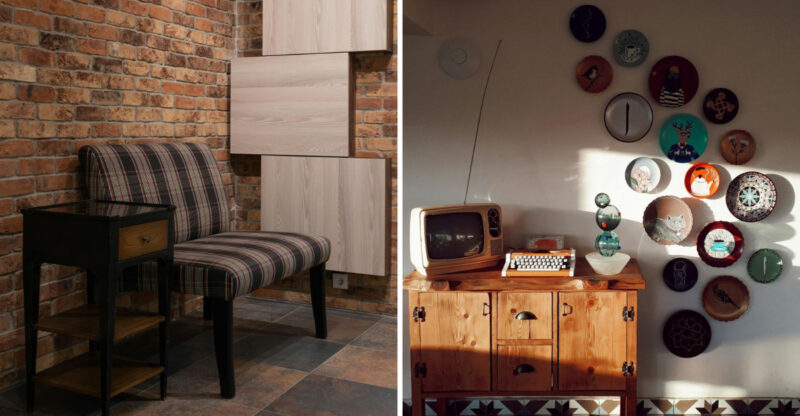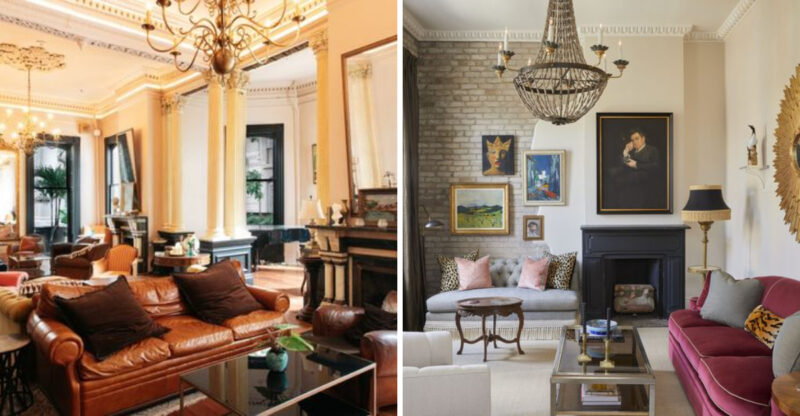Step Back In Time With 27 Retro Kitchen Styles Straight From The 1970s
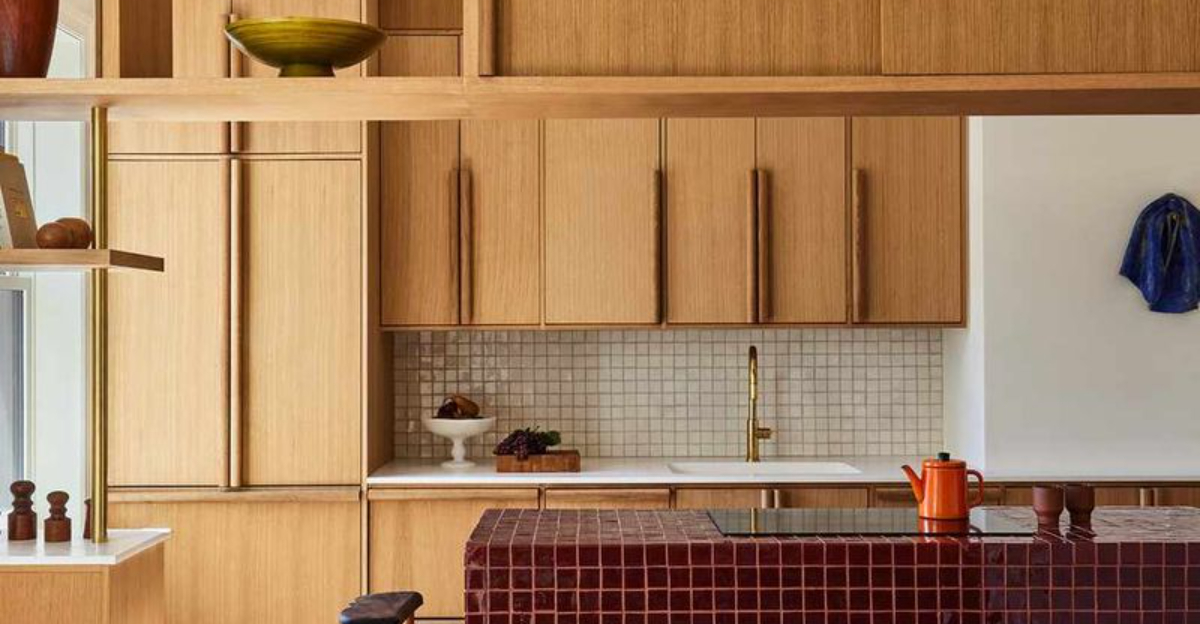
The 1970s was a golden era for bold, expressive kitchen design that threw caution to the wind.
Vibrant colors, experimental materials, and unique fixtures created spaces that were as much about personality as they were about function.
Whether you’re renovating with retro inspiration or just curious about this iconic decade, these 27 quintessential 1970s kitchen elements capture the funky, free-spirited essence that made these cooking spaces truly unforgettable.
1. Avocado Green Appliances
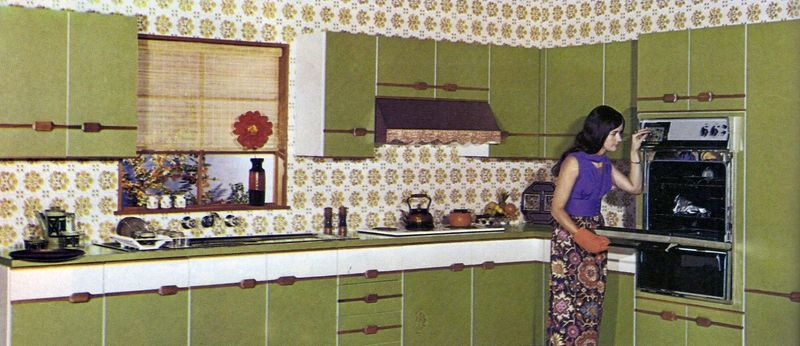
Nothing screams ’70s kitchen more than avocado green refrigerators, stoves, and dishwashers dominating the space. This iconic color transformed ordinary appliances into statement pieces that anchored the entire kitchen aesthetic.
Homeowners proudly displayed these verdant beauties as status symbols, often coordinating other elements around them. The slightly muted, earthy tone represented the decade’s fascination with bringing nature indoors.
Many original avocado appliances still function today, built with the durability that characterized manufacturing of that era. Collectors now pay premium prices for well-preserved examples, while modern manufacturers occasionally release retro-inspired versions to satisfy nostalgic homeowners.
2. Harvest Gold Color Scheme
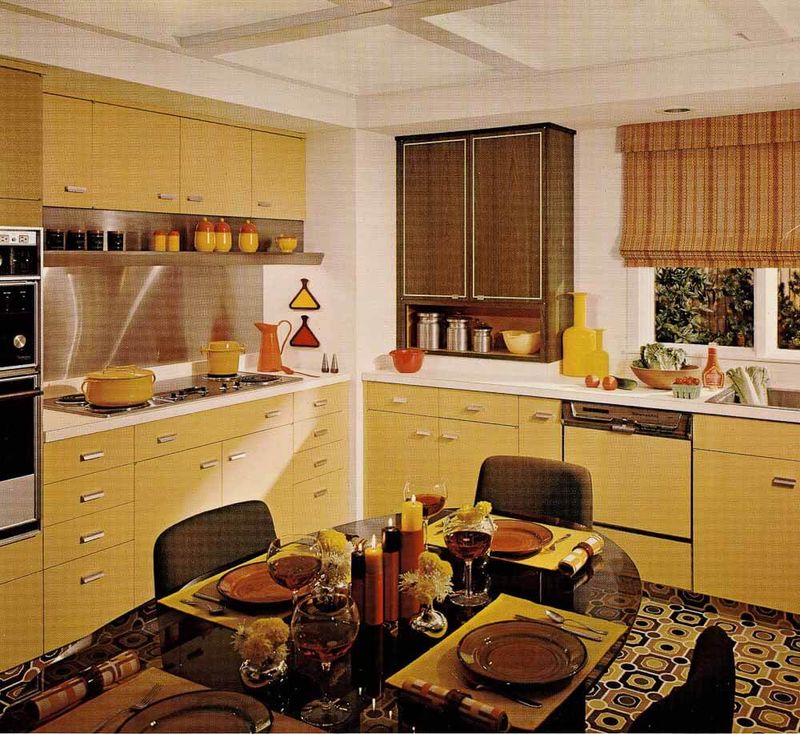
Warm and inviting, Harvest Gold reigned supreme alongside Avocado Green as the decade’s defining kitchen color. This rich, yellowish-gold hue adorned everything from refrigerators to wall ovens, creating a sunny ambiance that felt perpetually autumnal.
Manufacturers embraced this color so enthusiastically that matching sets became the standard for fashionable homes. When paired with dark wood cabinets or brown accents, Harvest Gold created the quintessential ’70s warmth many homeowners craved.
The color represented prosperity and abundance fitting for the heart of the home. Though it eventually fell from favor in the minimalist ’80s, today’s vintage enthusiasts eagerly seek out original Harvest Gold appliances for authentic retro kitchen renovations.
3. Dark Wood Cabinets
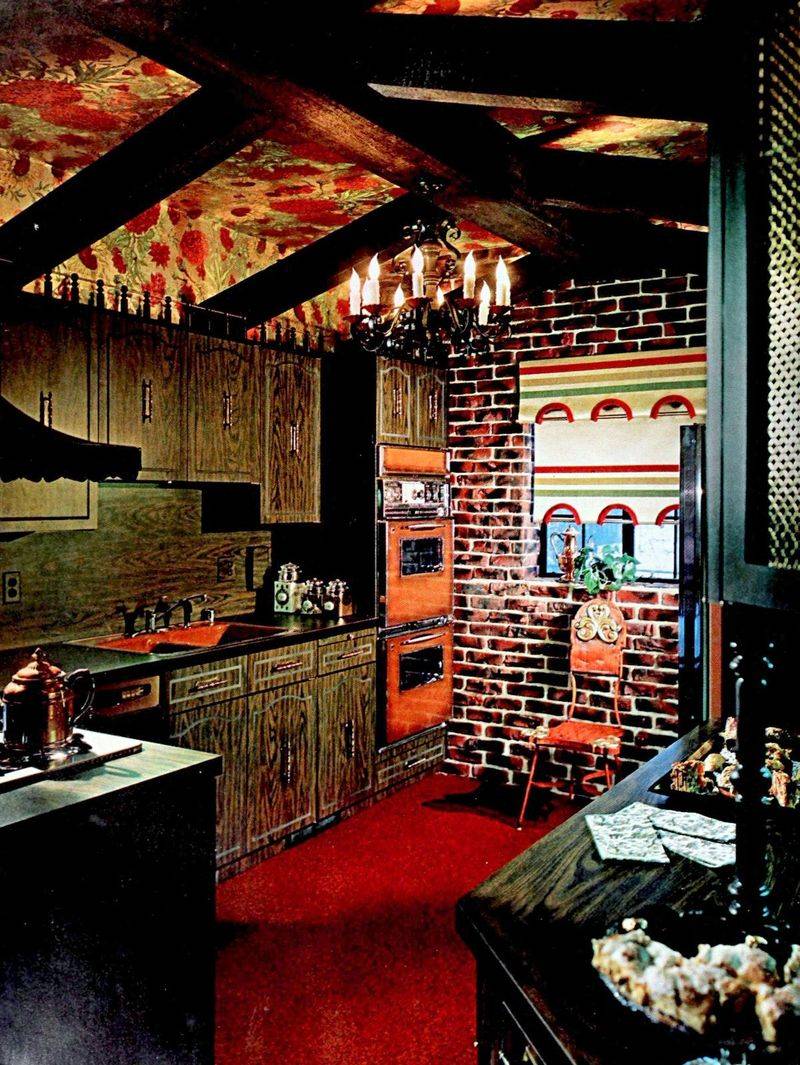
Heavy oak or walnut cabinetry dominated ’70s kitchens, bringing rich, dramatic contrast to colorful appliances and countertops. These substantial storage solutions featured pronounced wood grain patterns that homeowners proudly displayed rather than concealed.
Cabinet doors often showcased raised panel designs or decorative routing that added visual texture to the space. The warm, chocolate-brown tones created a cozy atmosphere that felt simultaneously rustic and sophisticated.
Unlike today’s trend toward lighter finishes, these dark wood cabinets anchored the kitchen as a serious space for cooking and gathering. Many original installations survive today, testament to the quality craftsmanship of the era though modern homeowners often lighten them with paint to brighten spaces.
4. Laminate Countertops
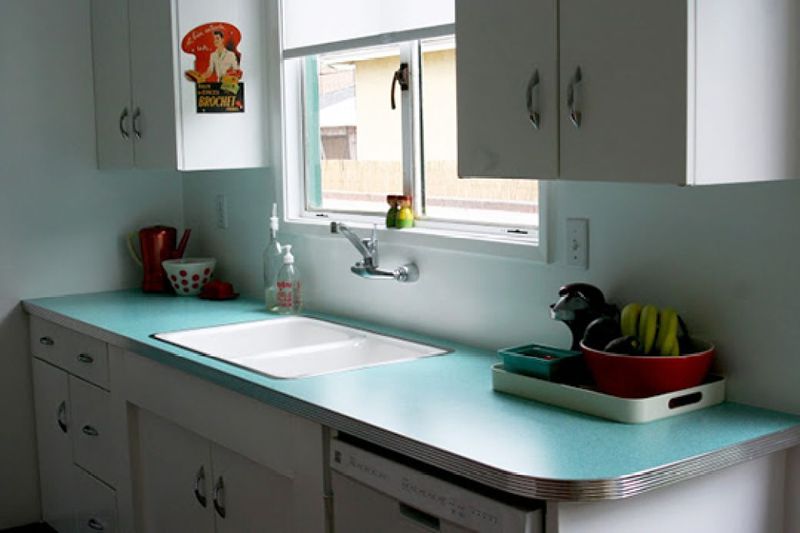
Formica and other laminate brands revolutionized kitchen design with affordable, durable surfaces in wild patterns and colors. Homeowners could choose from speckled designs, faux marble effects, or solid colors that complemented their appliances perfectly.
These practical surfaces featured distinctive rolled edges with metal trim that created the unmistakable retro profile. Maintenance was minimal just wipe clean making them perfect for busy families embracing convenience foods and casual entertaining.
Though natural stone eventually replaced laminate in luxury homes, these synthetic surfaces perfectly embodied the decade’s embrace of modern materials and practical solutions. Today, specialty manufacturers offer authentic reproductions for homeowners seeking that genuine ’70s vibe without the vintage wear and tear.
5. Bold Geometric Backsplashes
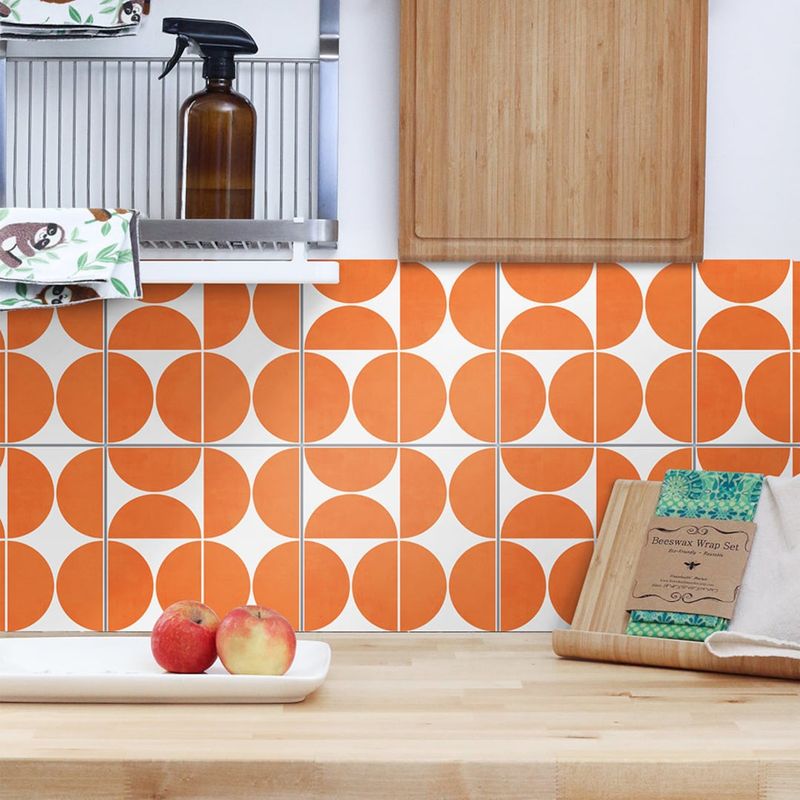
Walls above countertops became canvases for dramatic geometric expressions in ’70s kitchens. Hexagons, diamonds, and abstract shapes in contrasting colors created eye-catching displays that energized the cooking space.
Ceramic tiles in orange, brown, and gold arranged in repeating patterns became the standard for fashion-forward homes. These bold designs often extended beyond the typical backsplash area, sometimes covering entire walls as decorative focal points.
The patterns reflected broader design trends of the decade, including influences from op-art and modernist movements. While modern kitchens typically feature subtle backsplashes, these dramatic geometric installations proudly announced their presence and refused to blend into the background much like the decade itself.
6. Vinyl Flooring with Patterns
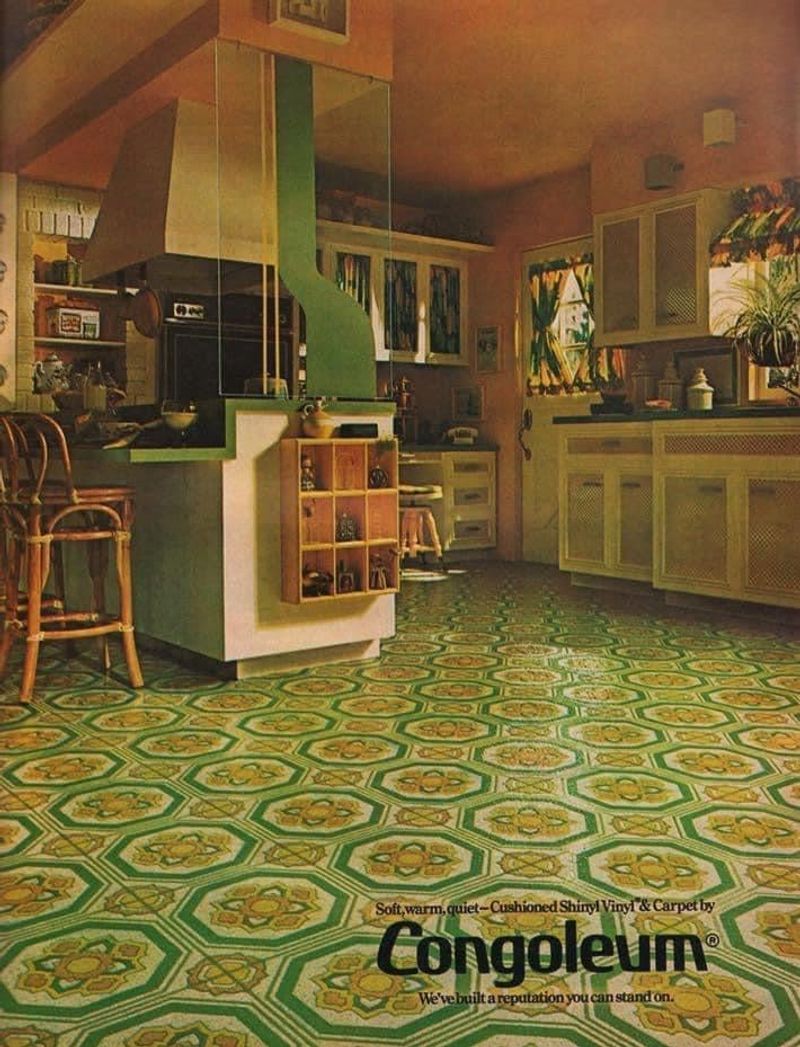
Underfoot, ’70s kitchens showcased vinyl flooring in bold patterns that would make today’s minimalists gasp. Faux brick, stone, or tile patterns in high-contrast colors created visual interest while providing practical, easy-to-clean surfaces for busy households.
Sheet vinyl allowed for seamless installation, eliminating grout lines while mimicking more expensive materials. Popular motifs included Mediterranean-inspired designs, rustic cobblestone effects, and geometric patterns that coordinated with other kitchen elements.
The cushioned backing made these floors comfortable for long cooking sessions. Though vinyl eventually developed a reputation as a budget option, during the ’70s these floors represented cutting-edge technology and fashion-forward design choices that practical homemakers embraced enthusiastically.
7. Wood Paneling Walls
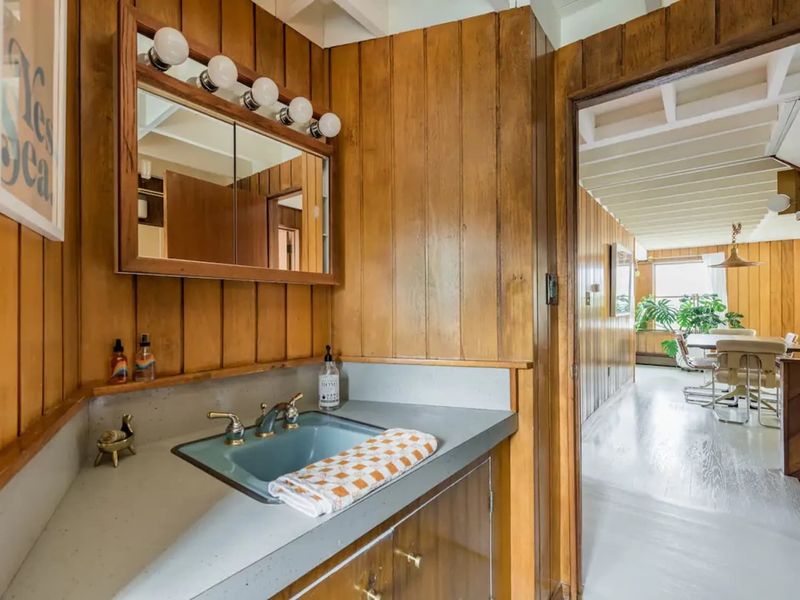
Many ’70s kitchens extended the wood theme beyond cabinets with full or partial wall paneling that created a den-like atmosphere. Dark-stained pine or oak panels with distinctive vertical grooves transformed kitchens into warm, enveloping spaces.
This treatment often appeared on accent walls or extended from adjacent family rooms, creating visual continuity between spaces. The textured surface added depth and character while hiding wall imperfections a practical benefit homeowners appreciated.
Unlike today’s bright, airy kitchens, these wood-enclosed spaces embraced a cozy, intimate feel. The paneling absorbed sound and created a sense of permanence and solidity that matched the substantial furniture and appliances of the era.
8. Drop Ceiling Panels
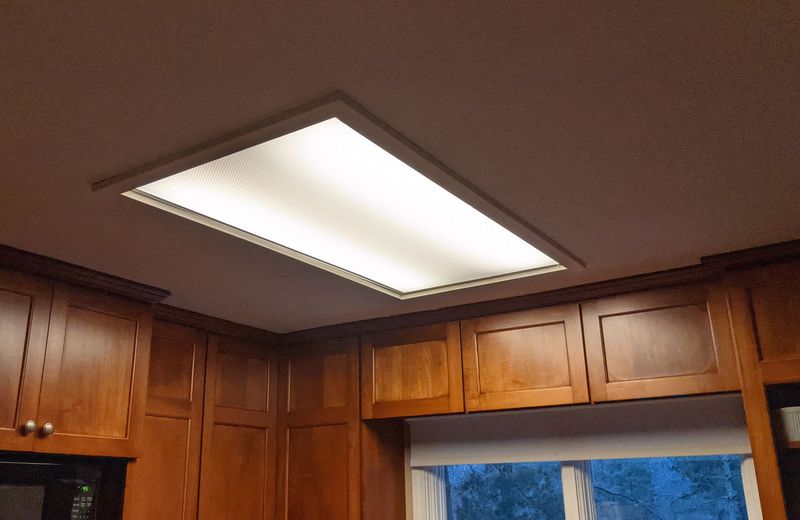
Suspended ceilings with fluorescent lighting panels transformed ’70s kitchens into bright, modern spaces. These practical installations concealed old ceiling imperfections while housing the decade’s beloved fluorescent tube lighting that eliminated shadows from work surfaces.
White grid systems typically held translucent or opaque panels, though some adventurous homeowners opted for tinted or textured versions. The dropped height created a more intimate feeling in larger kitchens while providing convenient access to new electrical wiring without major construction.
Built-in lighting reduced the need for lamps or pendants that might interrupt the clean lines of modern kitchen design. Though largely replaced by recessed lighting today, these distinctive ceilings remain instantly recognizable as a hallmark of ’70s interior architecture.
9. Built-In Kitchen Radios
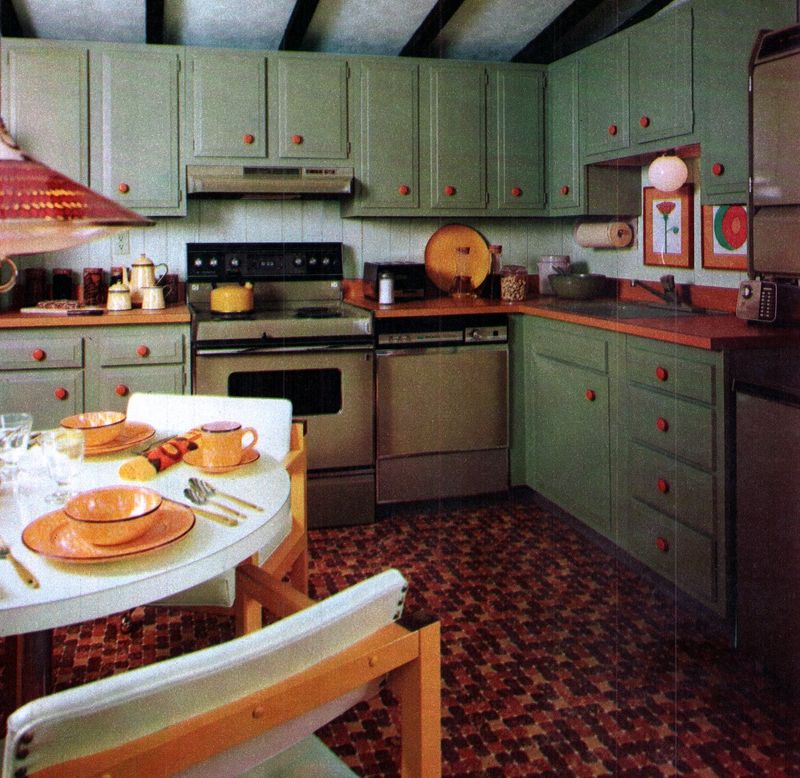
Music while cooking became effortless with under-cabinet or built-in wall radios that freed up precious counter space. These practical appliances featured simple dials for volume and tuning, often with a small clock incorporated into the design.
Manufacturers offered models in coordinating colors to match major appliances – avocado green, harvest gold, or white being the most common. The modest speakers delivered AM/FM broadcasts of news, music, and talk shows to keep homemakers company during meal preparation.
Unlike today’s Bluetooth speakers or smart devices, these permanent fixtures became part of the kitchen architecture. Many were installed during construction, with dedicated electrical connections that demonstrated the importance of kitchen entertainment before portable electronics became commonplace.
10. Brick Accent Walls
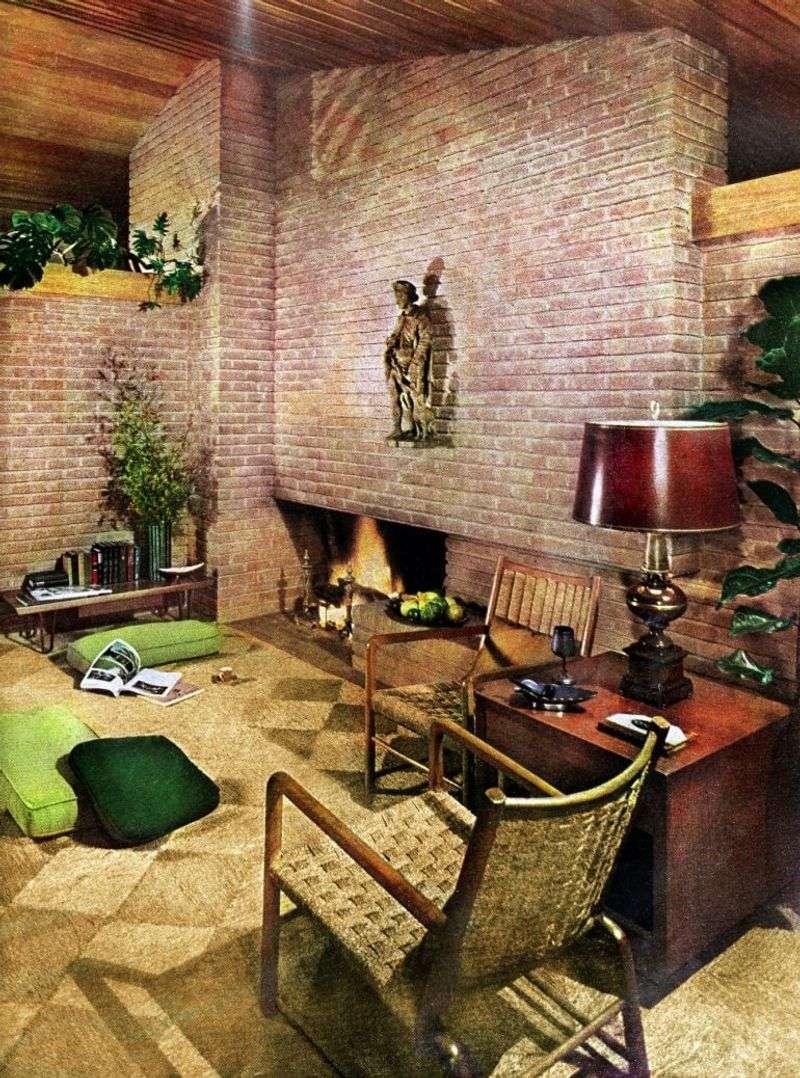
Real or faux brick walls added rustic character to ’70s kitchens, creating a striking contrast with modern appliances and smooth countertops. These textural elements typically appeared on a single wall, often behind the stove or sink area as a focal point.
The warm red-orange tones complemented the era’s popular earth-tone color schemes. Homeowners embraced both authentic brick and convincing simulations made from thin brick veneer or even vinyl that delivered the look without the construction complexity.
This architectural feature reflected the decade’s fascination with bringing traditional materials into contemporary settings. The exposed brick trend represented a reaction against the sleek, space-age aesthetics of the 1960s, signaling a return to more natural, textural elements in home design.
11. Copper Range Hoods
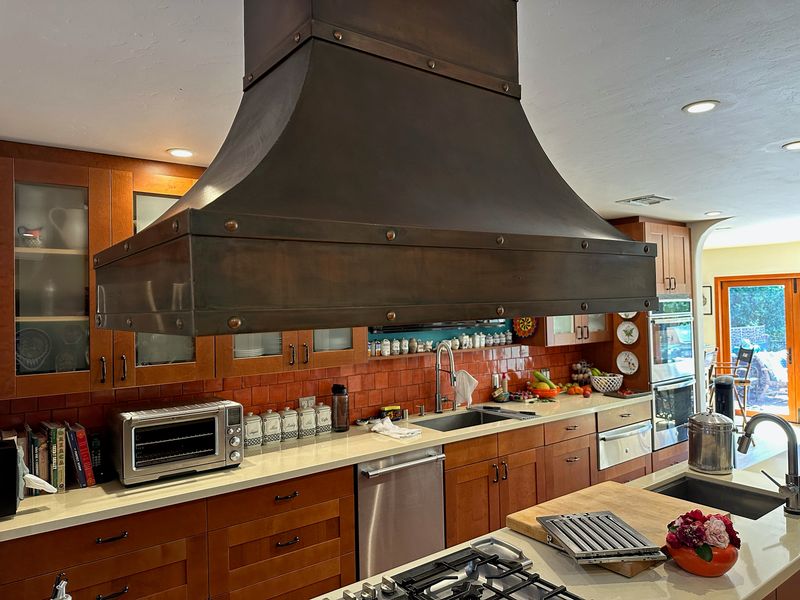
Gleaming copper hoods commanded attention as the crown jewels of serious ’70s cooking spaces. These substantial ventilation systems combined practical function with dramatic visual impact, often custom-sized to fit expansive cooking ranges.
Hammered finishes or decorative embossing added textural interest that caught the light beautifully. The warm metallic tone complemented the era’s popular earth-colored palettes while adding a touch of luxury and sophistication.
Unlike today’s sleek, minimalist hoods, these copper showpieces were designed to be noticed. Many featured elaborate shapes with curved or angled profiles that projected several inches from the wall, creating three-dimensional interest that emphasized their importance in the kitchen hierarchy.
12. Orange Formica Counters
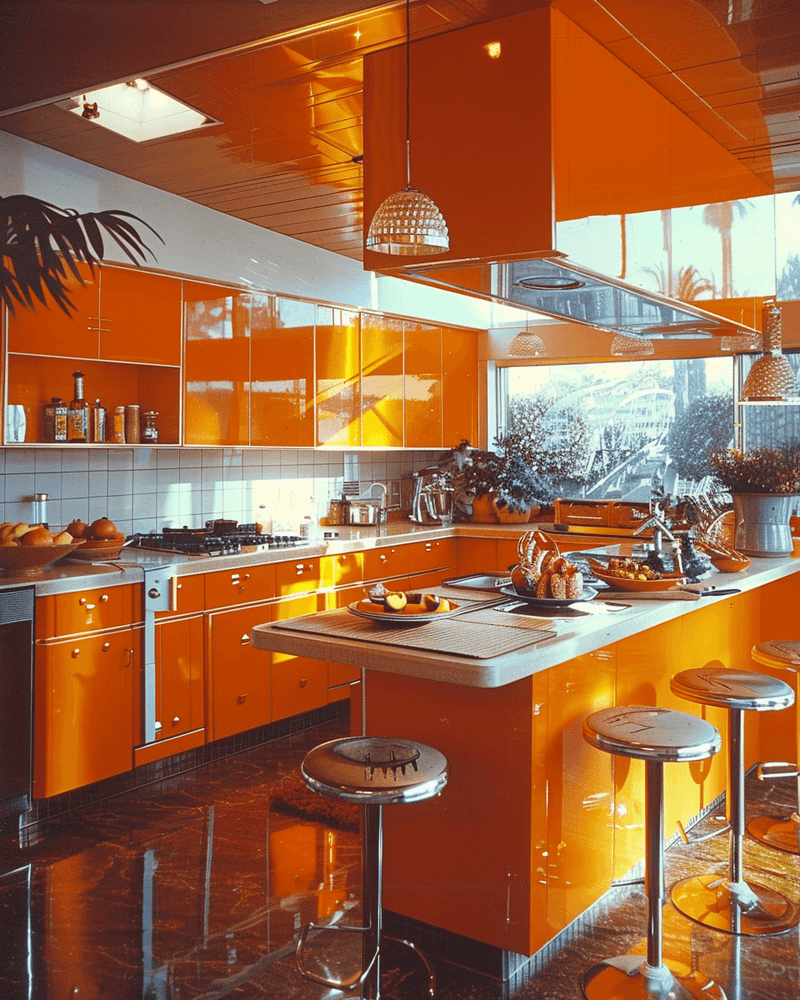
Bright orange laminate countertops boldly announced the homeowner’s embrace of modern design and rejection of traditional kitchen aesthetics. This vibrant surface choice paired dramatically with dark wood cabinets and created energetic contrast in cooking spaces.
The smooth, seamless finish offered practical benefits easy cleaning and resistance to stains – while making an unmistakable style statement. Pattern variations included solid orange, speckled designs incorporating complementary earth tones, or even subtle woodgrain textures with orange undertones.
Though rarely seen in contemporary kitchens, these vivid countertops perfectly captured the decade’s fearless approach to color. The orange tone harmonized with popular appliance colors while adding warmth and vitality to spaces that previous generations had treated as purely utilitarian.
13. Patterned Roller Shades
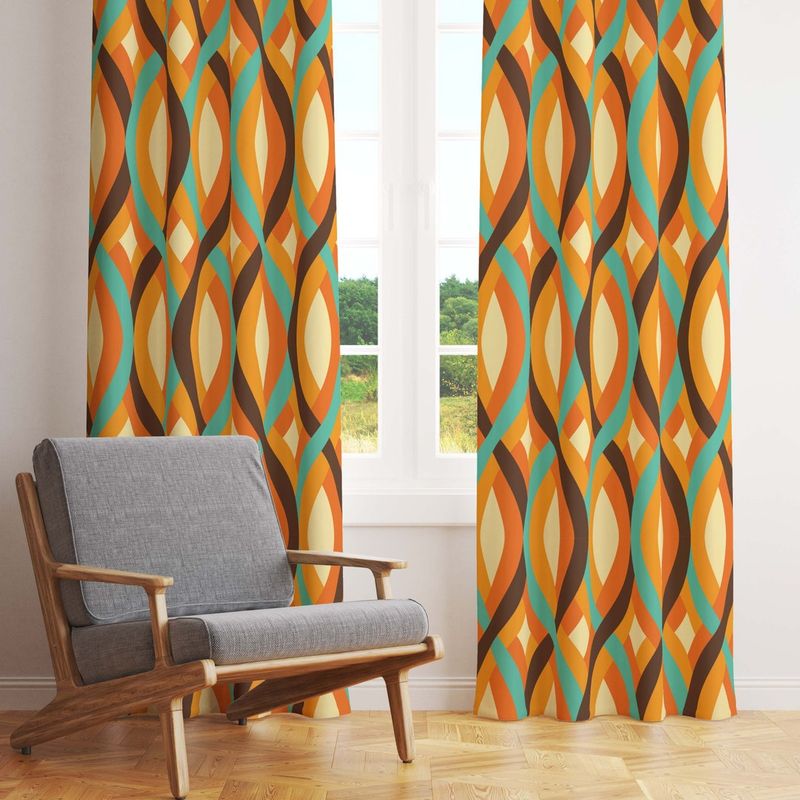
Windows dressed in vinyl roller shades featuring bold geometric or floral patterns added the perfect finishing touch to ’70s kitchens. These practical window coverings offered privacy and light control while contributing to the room’s decorative scheme.
Popular patterns included abstract geometrics, stylized flowers, or scenic designs in colors that coordinated with appliances and countertops. The vinyl material proved ideal for kitchen environments resistant to moisture, food splatter, and fading from sunlight.
Unlike today’s minimal window treatments, these decorative shades were meant to be noticed as design elements. When pulled down, they transformed into vertical art pieces that completed the kitchen’s aesthetic statement, proving that even practical items could serve decorative purposes in the expressive ’70s home.
14. Macramé Plant Hangers
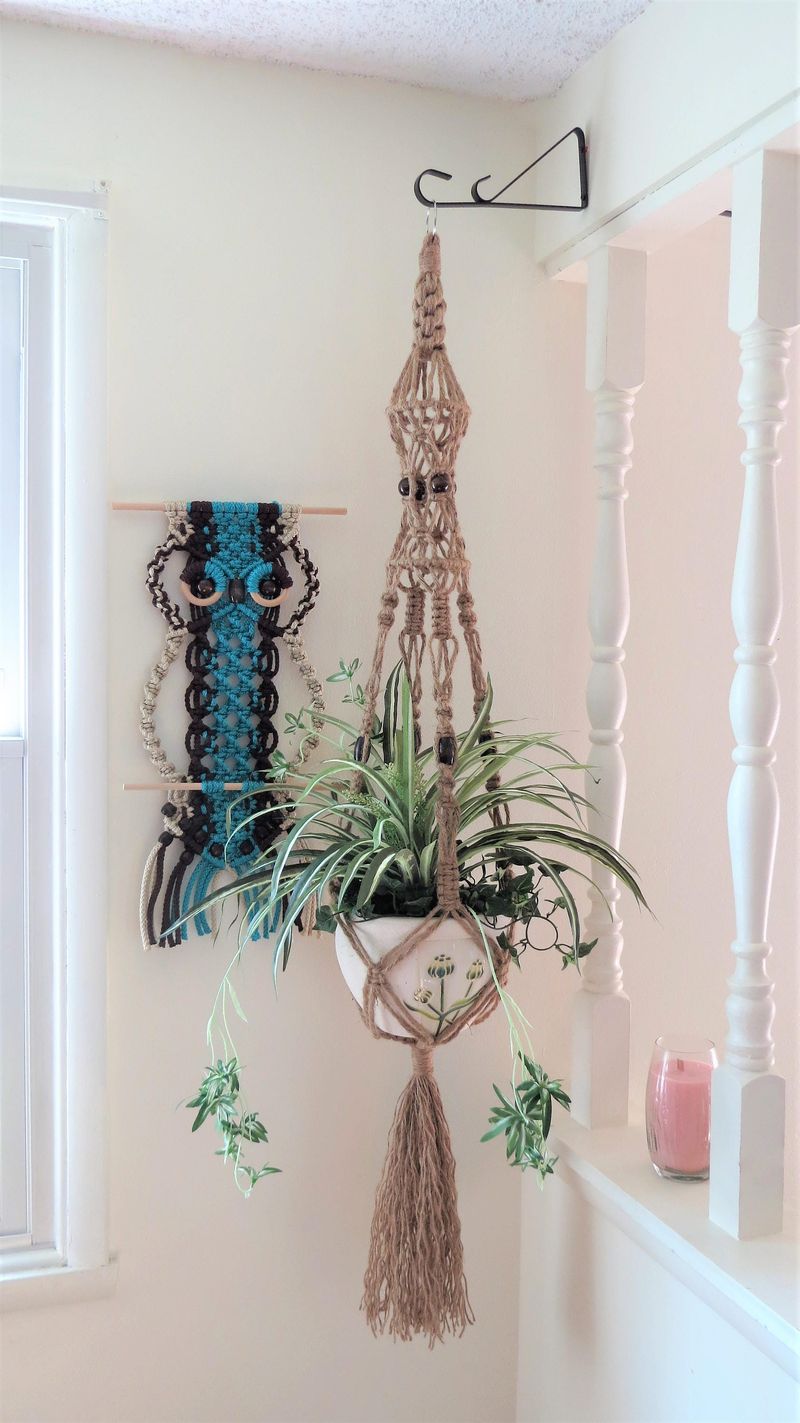
Handcrafted macramé plant hangers suspended lush greenery from ceilings and in front of windows, bringing natural elements into ’70s kitchens. These intricate creations featured complex knotting patterns made from natural jute or cotton cords, often embellished with wooden beads.
Spider plants, pothos, and ferns cascaded from these decorative slings, softening the kitchen’s hard surfaces with organic textures. The hanging plants utilized vertical space effectively while connecting with the decade’s back-to-nature movement and growing interest in houseplant cultivation.
DIY enthusiasts embraced macramé as an accessible craft, creating personalized designs that expressed their creativity. Though they eventually became symbols of dated decor, these handmade elements represented the decade’s rejection of mass production in favor of artisanal, personalized home accessories.
15. Breakfast Nooks with Booth Seating
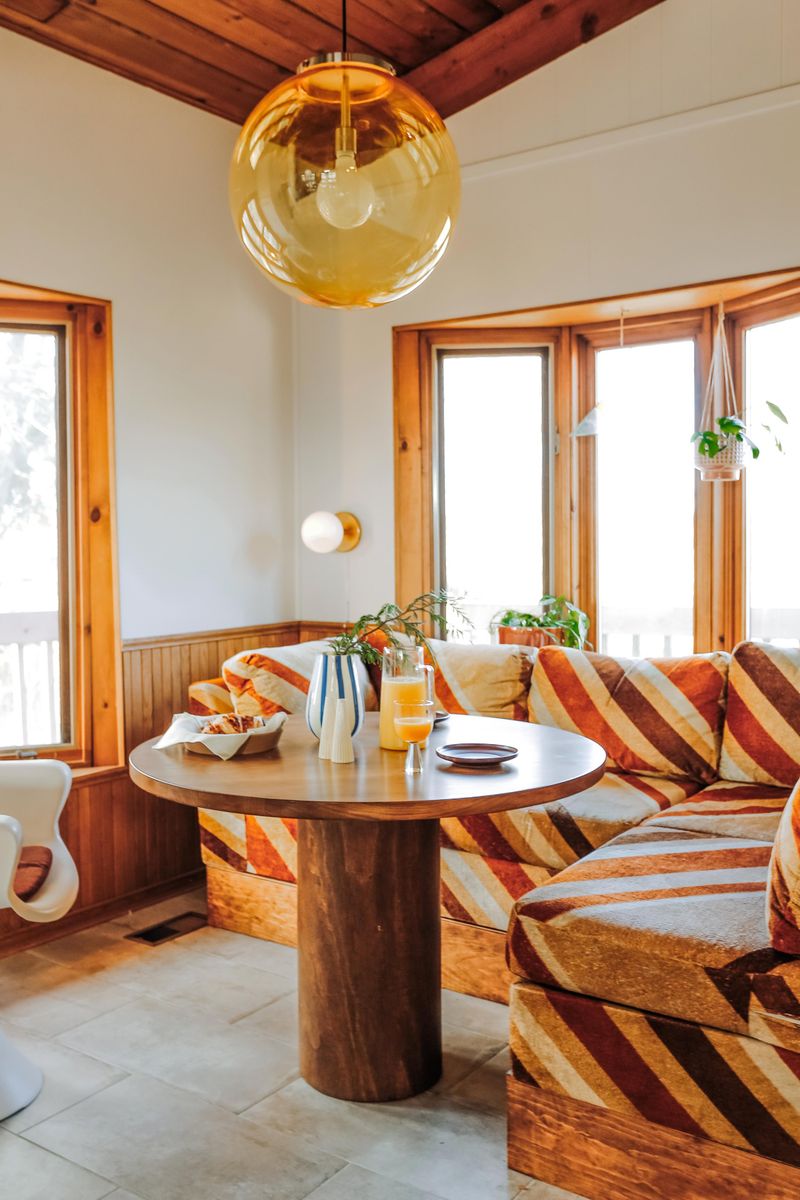
Corner breakfast nooks with built-in bench seating created cozy dining spots that maximized space efficiency in ’70s kitchens. These architectural features typically included L-shaped benches with high backs, a permanent table, and sometimes an overhead pendant light to define the area.
Upholstery featured durable vinyl in coordinating kitchen colors often with button tufting or channel stitching for added texture. Storage drawers beneath the benches provided convenient places for linens, rarely-used serving pieces, or children’s items.
Unlike formal dining rooms reserved for special occasions, these casual eating areas encouraged family meals and everyday interactions. The intimate scale and comfortable seating invited lingering conversations over coffee, making the kitchen a true gathering space rather than just a food preparation area.
16. Shag Area Rugs in the Kitchen
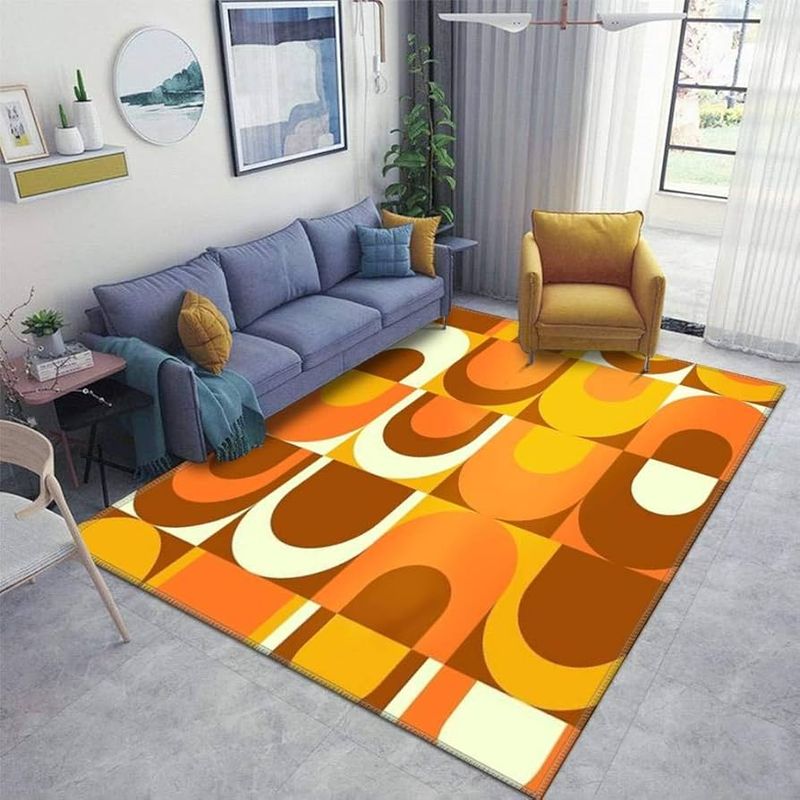
Plush shag rugs in vibrant colors brought unexpected softness and warmth to ’70s kitchen floors. These high-pile textiles created comfortable standing areas near sinks or stoves where homemakers spent long periods preparing meals.
Bold orange, gold, or avocado green rugs complemented appliances and added visual interest to solid-colored vinyl floors. The substantial texture contrasted beautifully with the sleek surfaces elsewhere in the kitchen, creating tactile variety that engaged multiple senses.
Though impractical by today’s standards of kitchen hygiene, these cozy floor coverings reflected the decade’s prioritization of comfort and personal expression over strict functionality. Their presence signaled the kitchen’s evolution from a purely utilitarian workspace to a comfortable living area where family members gathered throughout the day.
17. Mosaic Tile Tabletops
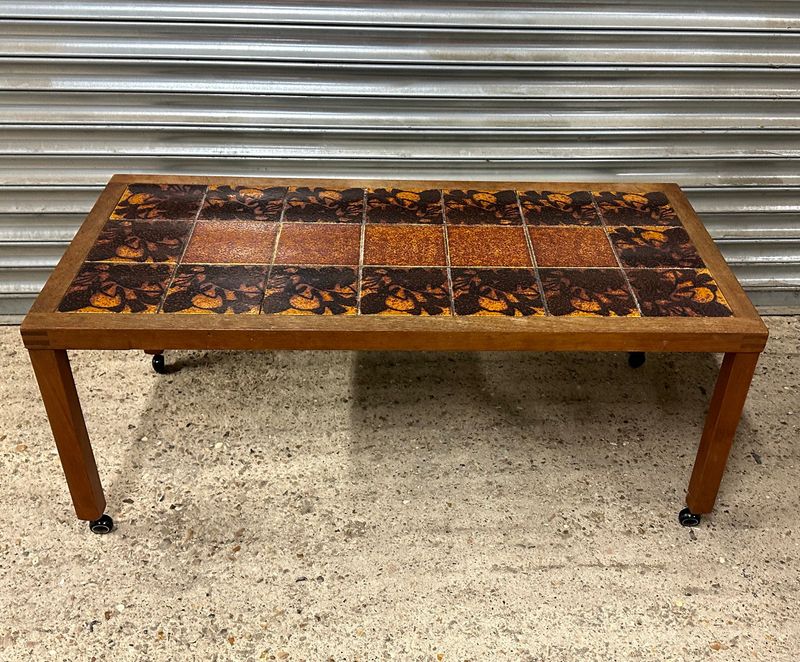
Kitchen tables topped with colorful mosaic tiles served as both functional eating surfaces and artistic focal points in ’70s homes. These distinctive tables featured small ceramic tiles arranged in geometric patterns or abstract designs, often incorporating the room’s dominant color scheme.
Heavy wooden bases supported these substantial tabletops, which proved remarkably durable against hot dishes and spills. The grouted surface created textural interest that plain laminate tables couldn’t match, elevating everyday dining with artisanal character.
DIY enthusiasts often created these tables themselves, selecting tiles that perfectly complemented their kitchens. The handcrafted quality reflected the decade’s growing interest in personalized decor and rejection of mass-produced furniture, allowing homeowners to display their creativity in highly visible, functional pieces.
18. Pendant Globe Lights
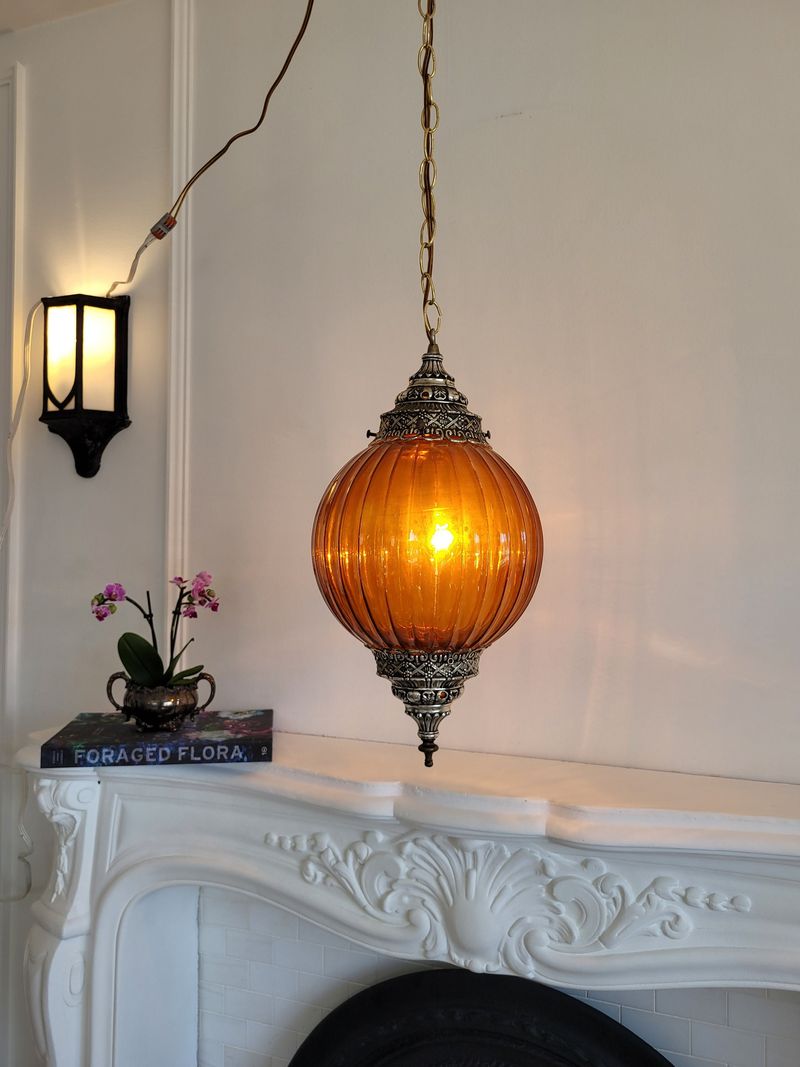
Spherical pendant lights suspended over dining areas or islands became iconic fixtures in ’70s kitchens. These globe-shaped lamps featured amber glass, white opal glass, or sometimes colorful acrylic that diffused light beautifully throughout the space.
Hanging heights varied dramatically some almost touched tabletops while others dangled from long chains or rods attached to high ceilings. Metal finishes typically included brass, chrome, or copper that coordinated with other kitchen hardware.
The round shape softened the kitchen’s angular elements while providing focused task lighting for dining or food preparation. Unlike today’s trend toward multiple small pendants, these substantial single globes made bold statements on their own, often measuring 12-18 inches in diameter proportion that perfectly suited the decade’s maximalist approach to design.
19. Wicker and Rattan Accents
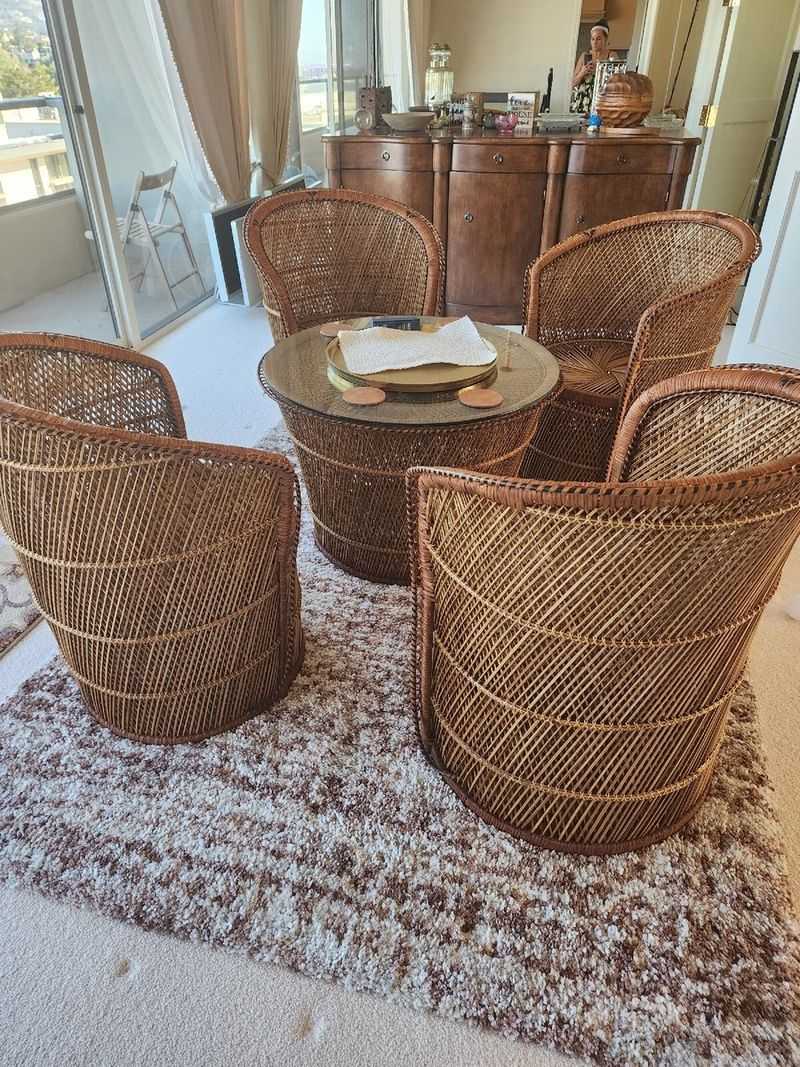
Natural wicker and rattan elements introduced organic texture to ’70s kitchens through bar stools, chair backs, and decorative accessories. These woven materials added visual warmth and casual elegance that balanced the era’s technological appliances.
Bar stools with wicker seats or basket-weave backs invited comfortable lingering at kitchen counters or islands. Wall-mounted rattan plate holders, utensil caddies, and wine racks combined practical storage with decorative appeal, often displayed prominently as part of the overall design scheme.
The natural golden tones harmonized beautifully with popular wood cabinets and earth-colored appliances. This incorporation of natural materials reflected broader cultural trends toward environmental awareness and appreciation for traditional craftsmanship during a decade increasingly concerned about mass production and synthetic materials.
20. Louvered Cabinet Doors
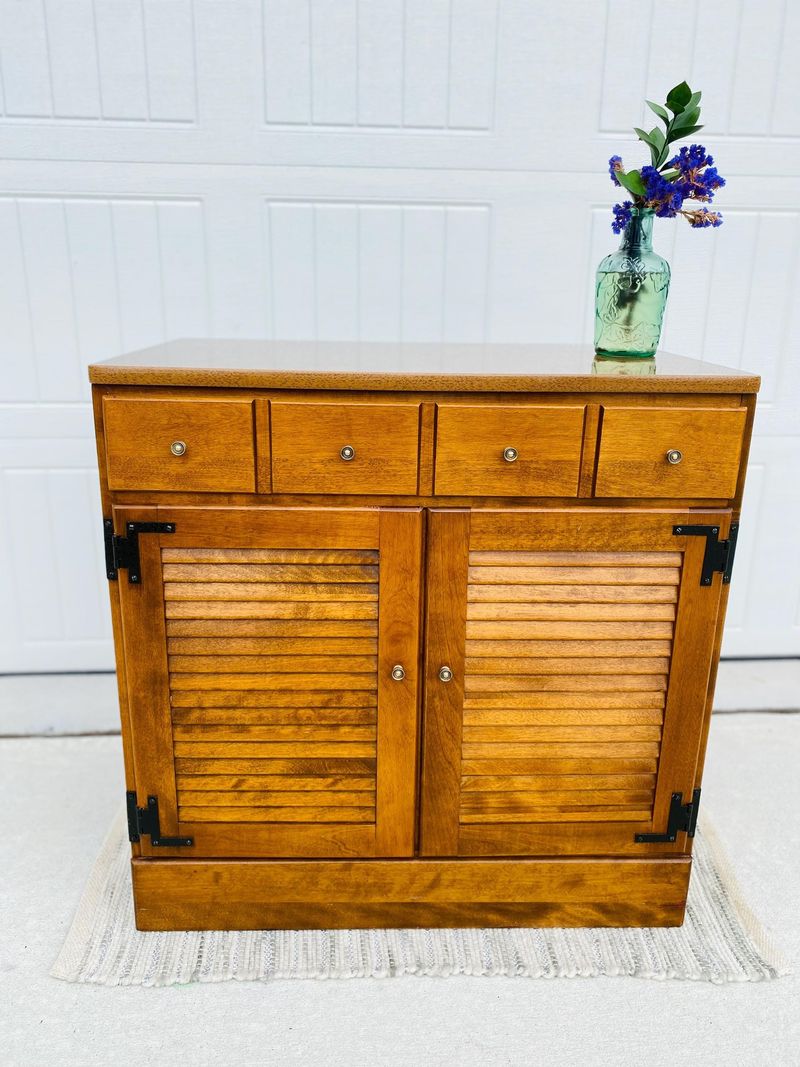
Horizontal wooden slats created distinctive cabinet fronts that added architectural interest to ’70s kitchens. These louvered doors featured angled wooden strips that allowed subtle ventilation while concealing cabinet contents – particularly useful for under-sink areas where moisture could accumulate.
The linear pattern created pleasing shadow lines that added depth and texture to kitchen walls dominated by cabinetry. Dark stained oak or walnut finishes emphasized the three-dimensional quality of these doors, creating visual rhythm across the kitchen.
Beyond their aesthetic appeal, louvered doors proved practical for pantry areas, allowing air circulation that helped preserve dry goods. Their distinctive appearance immediately identifies kitchens of this era, representing a perfect marriage of decorative detail and thoughtful functionality that characterized the best ’70s design.
21. Faux Butcher Block Counters
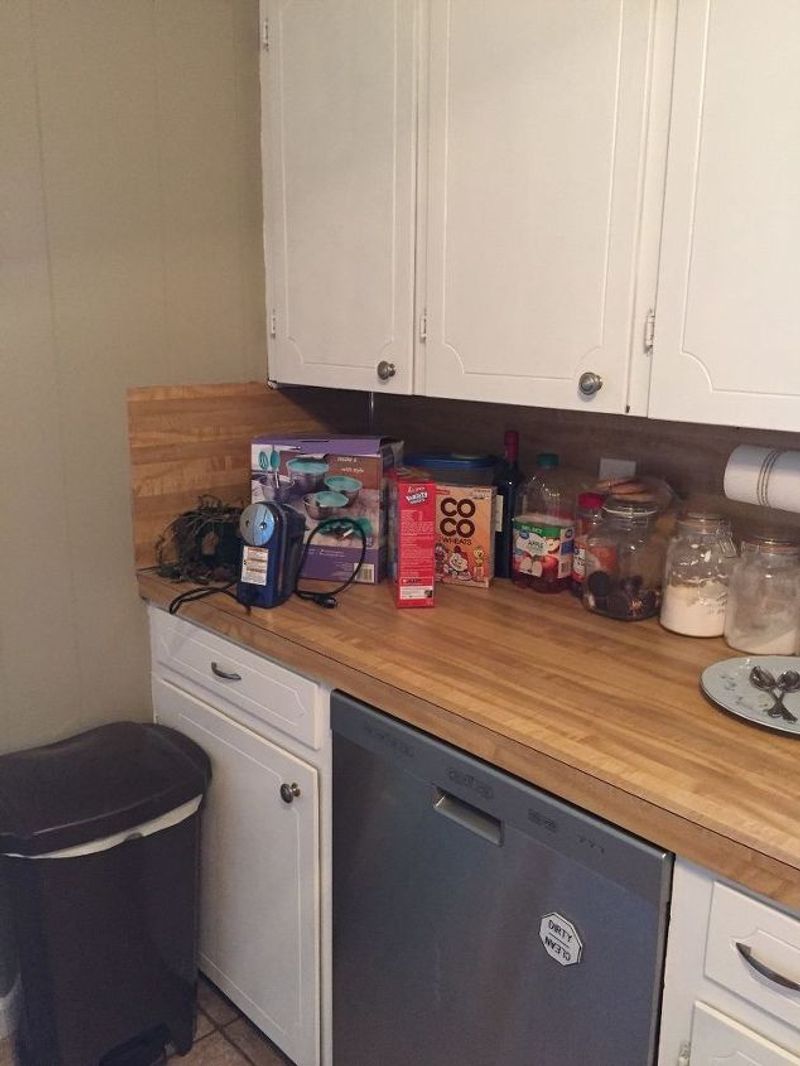
Wood-look laminate countertops mimicking butcher block brought warmth and practicality to ’70s kitchens without the maintenance real wood required. These affordable surfaces featured printed wood grain patterns sealed under plastic laminate, creating the rustic charm of butcher block with modern durability.
The honey-toned patterns coordinated beautifully with both dark and light cabinets, making them versatile design elements. Homeowners appreciated the natural look that softened kitchens otherwise dominated by colorful appliances and synthetic materials.
Unlike authentic butcher block, these surfaces resisted water damage and staining, requiring only simple cleaning. Their popularity represented the decade’s desire to balance traditional aesthetics with modern convenience – capturing the appearance of handcrafted materials while embracing the practical benefits of technological advancement.
22. Ceramic Canister Sets
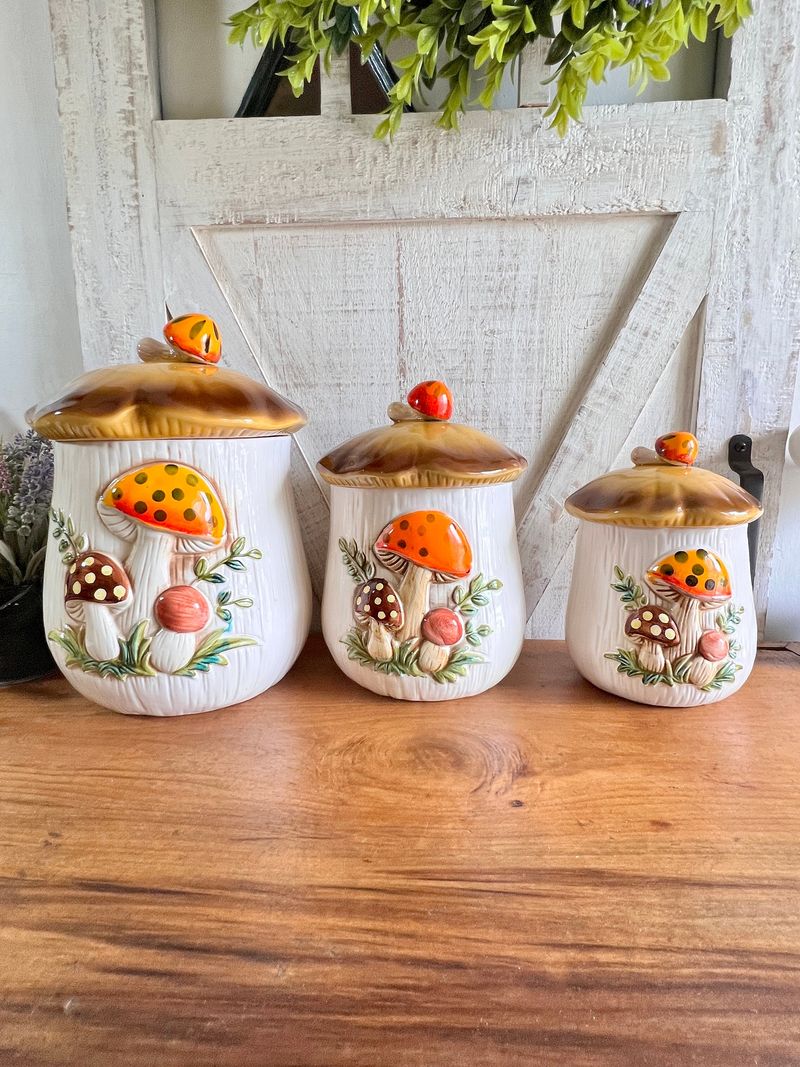
Matching ceramic containers for flour, sugar, coffee, and tea served as both practical storage and decorative elements on ’70s countertops. These substantial sets featured coordinated designs in earth tones that complemented kitchen color schemes while keeping pantry staples accessible.
Popular motifs included mushrooms, roosters, fruit patterns, or abstract designs that reflected broader decorative trends. The graduated sizes created pleasing visual rhythm when arranged together, turning everyday storage into an intentional design element.
Air-tight wooden or ceramic lids protected contents while adding textural contrast. Unlike today’s hidden storage preference, these canisters were meant to be displayed prominently as part of the kitchen’s decorative scheme, reflecting the decade’s approach to making even functional items contribute to the overall aesthetic.
23. Scalloped Cabinet Trim
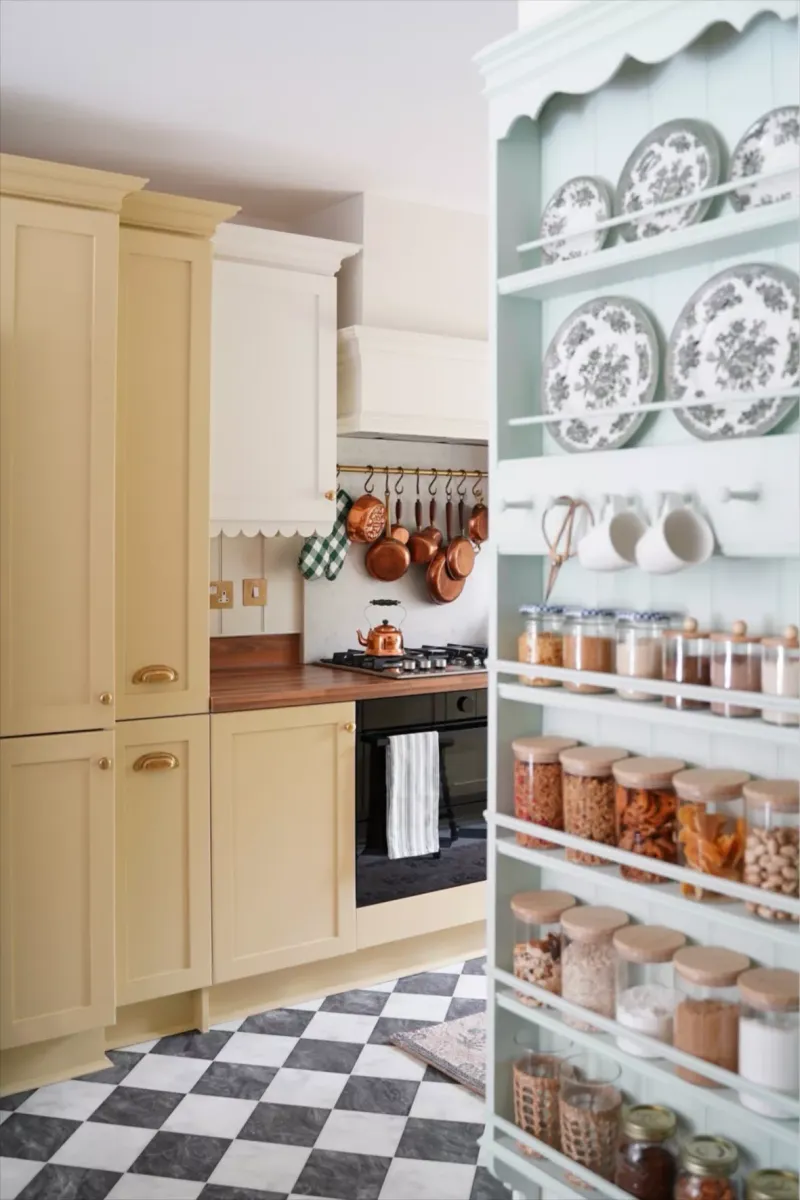
Decorative scalloped wood trim adorned cabinet edges and undersides, adding charming detail to ’70s kitchen woodwork. This distinctive finishing touch featured repeating curved cutouts that softened the angular lines of standard cabinetry.
Typically stained to match the cabinets themselves, this trim appeared most commonly along upper cabinet bottoms, beneath sink areas, or as crown molding at ceiling height. The dimensional detail created interesting shadow patterns that added visual depth and craftsmanship to factory-made cabinets.
This embellishment reflected the decade’s appreciation for decorative woodworking details that elevated everyday elements. Though later viewed as overly fussy by minimalist designers, these scalloped edges represented the warm, homey aesthetic many ’70s homeowners sought a reaction against the sleek, space-age look of previous decades.
24. Retro Wall Clocks
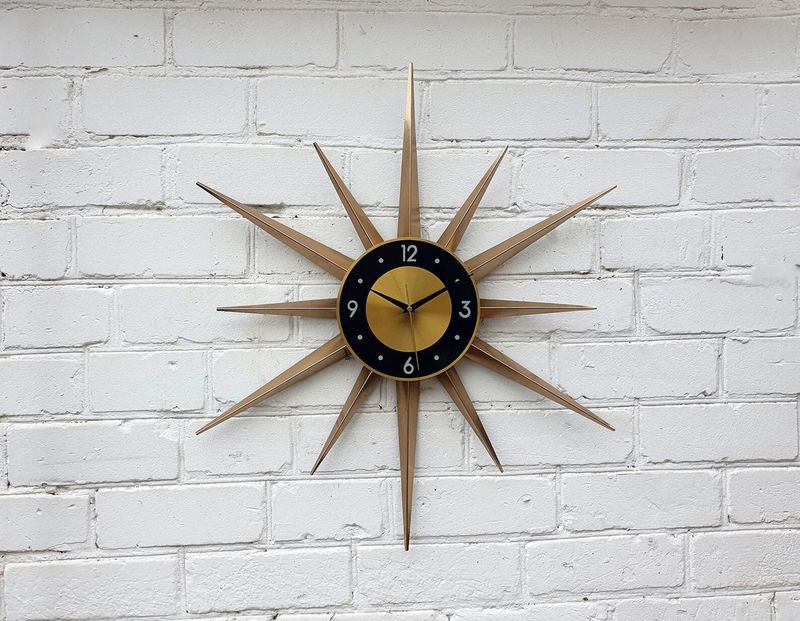
Oversized decorative clocks served as functional art pieces on ’70s kitchen walls. These statement timepieces often featured sunburst designs, starburst patterns, or geometric shapes that extended well beyond the clock face itself.
Materials ranged from molded plastic to carved wood or metal, frequently incorporating multiple colors that coordinated with the kitchen’s palette. The substantial size often 18-24 inches in diameter ensured these clocks commanded attention as focal points above doorways or dining areas.
Battery-operated movements eliminated the need for proximity to electrical outlets, allowing placement anywhere design dictated. These decorative timekeepers reflected the decade’s playful approach to functional objects, transforming a utilitarian device into an expression of personal style that contributed significantly to the kitchen’s overall character.
25. Bold Floral Wallpaper
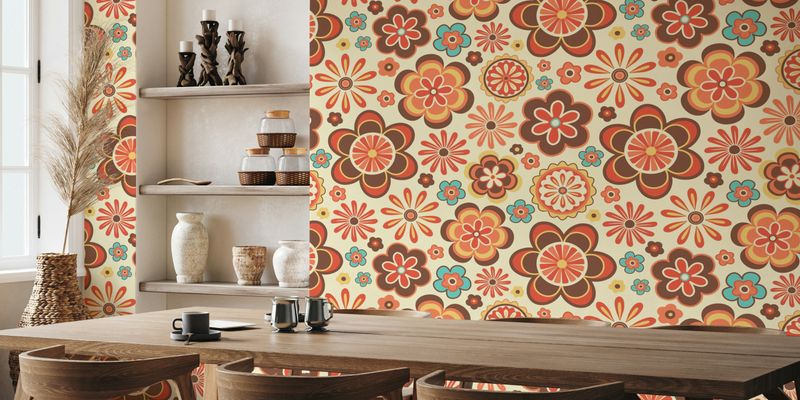
Dramatic floral patterns in high-contrast colors transformed kitchen walls into expressive design statements. These oversized botanical prints featured exaggerated flowers, leaves, and stems that created dynamic visual energy throughout the space.
Popular color combinations included orange and brown, gold and green, or blue and brown often incorporating several shades within a single pattern. The large-scale designs made small kitchens feel more expansive and interesting, while vinyl coatings provided practical moisture resistance in cooking areas.
Unlike today’s subtle wallpapers, these bold patterns were intended to dominate the design scheme, with appliances and furnishings selected to complement them. The unapologetically dramatic wall coverings perfectly captured the decade’s rejection of minimalism in favor of expressive, personality-filled interiors that reflected the homeowner’s confidence and style.
26. Tiled Kitchen Islands
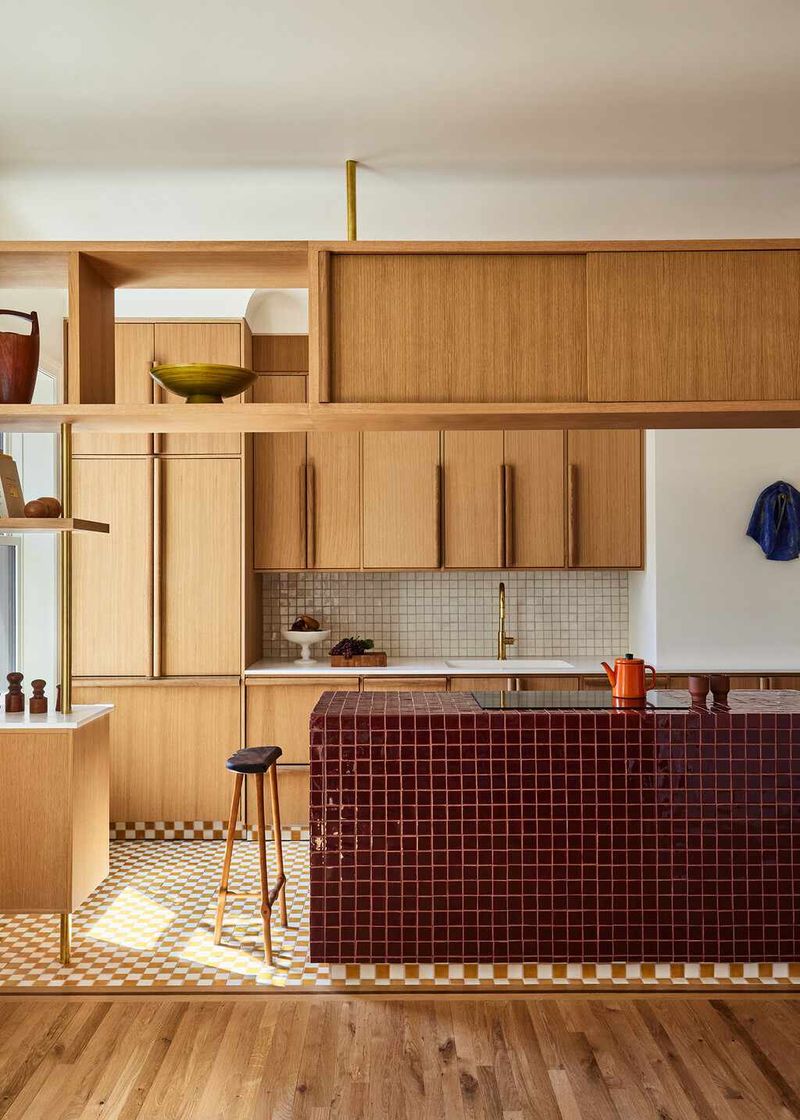
Ceramic tile transformed kitchen islands into colorful focal points that anchored ’70s cooking spaces. These substantial work surfaces featured glazed tiles in earth tones or vibrant colors that coordinated with the kitchen’s overall palette.
Small square tiles typically 4×4 inches created grid patterns across the entire surface and often wrapped down the sides. Grout lines were frequently darker than the tiles themselves, emphasizing the geometric arrangement and creating visual texture throughout the piece.
The durable ceramic surface withstood hot pots, knife marks, and food preparation without damage. Though eventually replaced by solid surface materials in later decades, these distinctive tiled islands remain immediately recognizable as hallmarks of ’70s kitchen design celebrating color, pattern, and practicality in equal measure.
27. Push-Button Electric Stoves
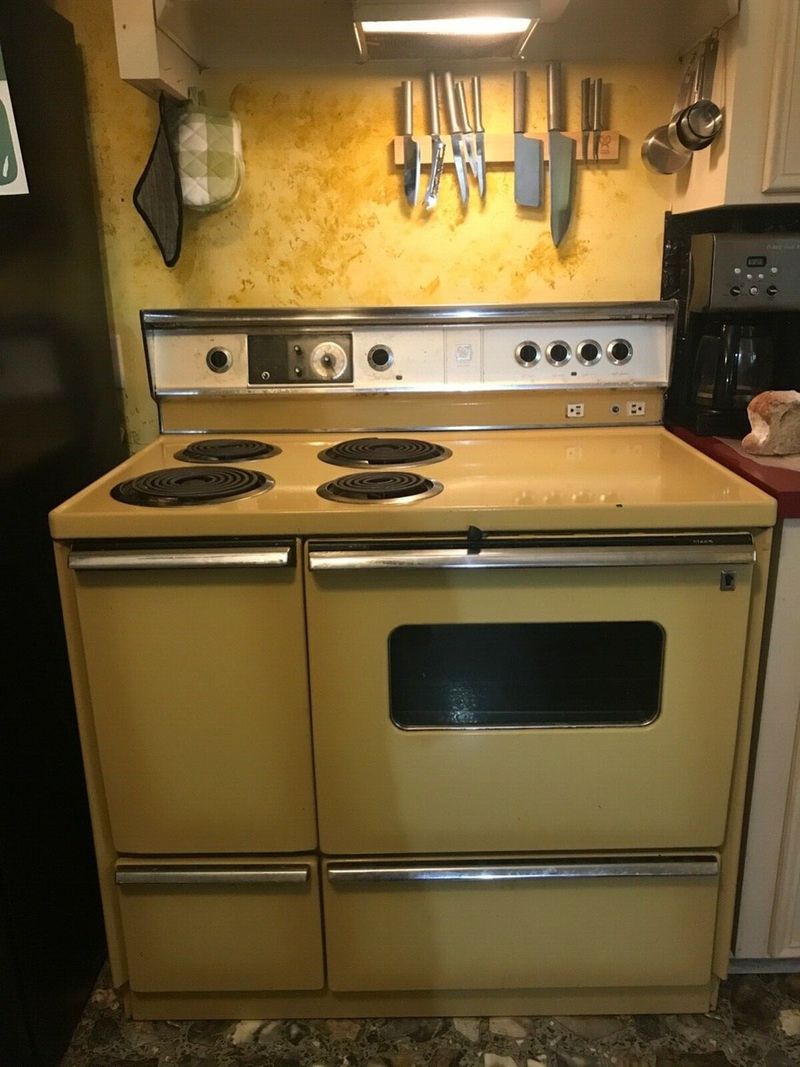
Cooking technology took a futuristic turn with push-button controls that replaced traditional dials on electric ranges. These innovative interfaces featured rows of rectangular buttons that controlled temperature settings with satisfying clicks, giving cooks precise control over heating elements.
Illuminated indicators showed which burners were active and at what intensity an important safety feature. The sleek control panels, typically positioned at the back of the cooktop or on a vertical face at the front, eliminated protruding knobs for a cleaner profile.
Available in all the popular appliance colors of the era, these ranges represented cutting-edge kitchen technology. Their distinctive appearance and tactile operation remain nostalgic touchpoints for anyone who grew up with these stoves, combining the era’s enthusiasm for modern convenience with its characteristic aesthetic flair.

